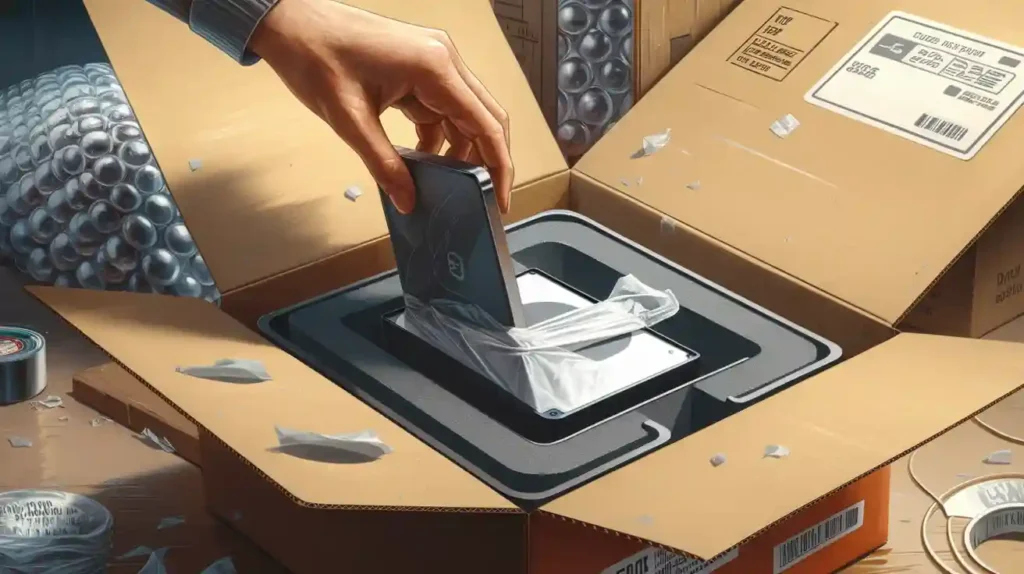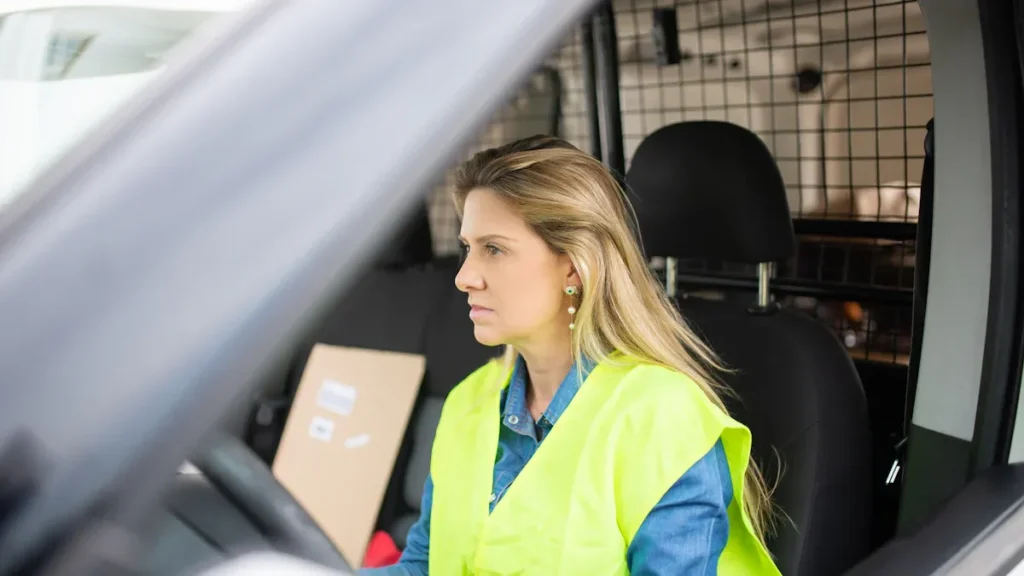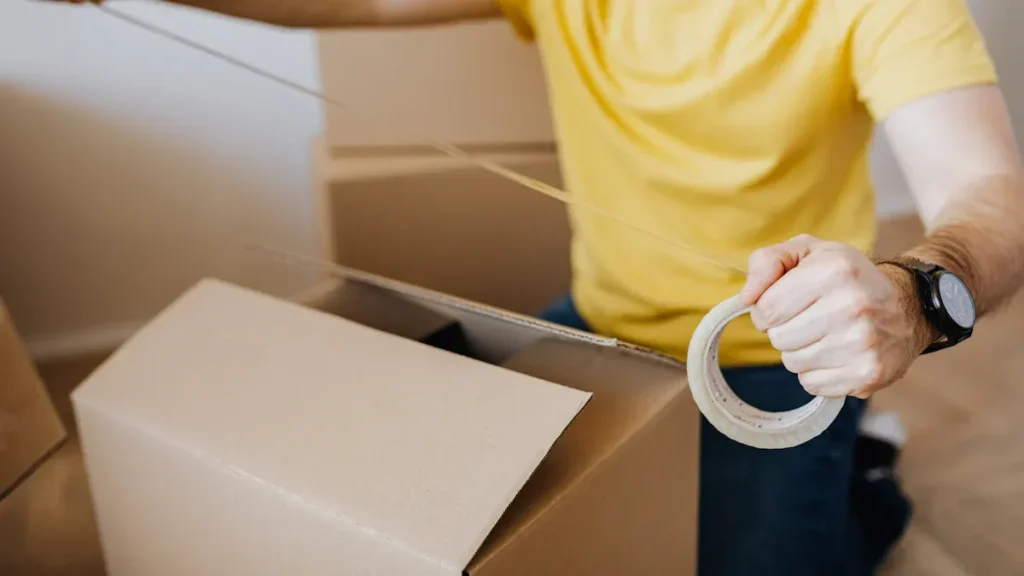
A Hard Drive Packaging Box is essential for keeping hard drives safe during shipping. Industry reports indicate that mechanical shocks, strong vibrations, and bumps frequently cause damage to data storage devices.
Head crashes can destroy both the platter and the read/write head
Using proper packaging and a hard drive shipping box significantly reduces these risks. Always follow the instructions provided with your hard drive shipping box to ensure maximum protection.
Key Takeaways
Always protect hard drives from static electricity by using anti-static or static-shielding bags before packing.
Wrap each hard drive with 2 to 6 inches of bubble wrap or foam and place it in a sturdy, cushioned packaging box to absorb shocks.
Seal the box securely with strong tape, label it clearly as fragile, and choose a reliable shipping carrier with tracking and insurance.
Packing Your Drives

Preparation Steps
Proper preparation is the foundation of safe hard drive shipping. Individuals should follow these steps to ensure the best protection for their devices:
Ground themselves by touching a metal object before handling hard drives. This step prevents static electricity from damaging sensitive components.
Remove the hard drive from the computer or enclosure. Handle the device by its edges to avoid contact with exposed circuitry.
Place the hard drive in an anti-static bag. If an anti-static bag is unavailable, use a ziplock bag as a temporary solution, but only for short distances.
For external hard drives or SSD drives, include any necessary cables or accessories if required.
Prepare all packing materials, including bubble wrap, foam inserts, and a hard drive packaging box.
Tip: Always work on a clean, static-free surface to reduce the risk of accidental damage.
Anti-Static Protection
Anti-static protection is critical when packing your drives. Static electricity can cause severe damage to hard drives, leading to data loss or device failure. Industry standards recommend using static-shielding bags, which create a Faraday cage effect and offer superior protection compared to standard anti-static bags. These bags prevent electrostatic discharge (ESD) by dissipating charges and shielding the drive from external static sources.
The industry often uses pink-colored anti-static packaging to signal ESD protection. For best results, select static-shielding bags that meet ANSI/ESD S541-2018 standards. Failing to use proper anti-static protection can result in device malfunction, reduced lifespan, and voided warranties. Always seal the anti-static bag to prevent the drive from slipping out during shipping.
Protective Measure | Description |
|---|---|
Anti-static bag | Reduces static buildup, but not full ESD protection |
Static-shielding bag | Provides Faraday cage effect, best for shipping hard drives |
Hard plastic case | Adds robust physical and ESD protection |
Cushion the Hard Drive
To cushion the hard drive, wrap it in 2 to 6 inches of bubble wrap or foam. This padding absorbs shocks and prevents movement inside the box. Secure the bubble wrap with tape to keep it in place. Avoid using packing peanuts or newspaper, as these materials can settle or generate static, leaving the drive exposed to impact or ESD.
Cushioning Material | Recommended Thickness | Notes |
|---|---|---|
Foam | Preferred for shock absorption and proper padding | |
Bubble Wrap | 2-6 inches | Multiple layers improve protection |
Packing Peanuts | Not recommended | Can settle, create static, and offer insufficient support |
Newspaper | Not recommended | Lacks shock absorption, ink and fibers may harm the drive |
If the box shakes and the drive moves, add more cushioning. The drive should remain suspended in the center of the hard drive packaging box, away from all sides. For multiple hard drives, wrap each one individually and ensure they do not touch.
Note: Proper packing and cushioning are essential for both HDD and SSD devices. SSDs are more resistant to shock but still require anti-static and physical protection.
Choosing a Hard Drive Packaging Box
Selecting the right hard drive packaging box is vital for safe shipping. The box should be sturdy, rigid, and slightly larger than the wrapped drive to allow for adequate cushioning. Features to look for include:
Shock-absorbing design with reinforced edges and cushioned interiors.
Moisture-resistant coatings and sealed edges to prevent water damage.
Anti-static inserts or linings for added ESD protection.
Precision fit to minimize movement and maintain structural integrity.
Durable yet lightweight materials, such as corrugated cardboard with reinforced liners.
Tamper-evident features like seals or locking tabs for shipment security.
Eco-friendly materials, supporting sustainability without sacrificing strength.
Custom corrugated packaging with foam inserts and anti-static linings offers the best protection for sensitive electronics. When available, original manufacturer packaging provides optimal cushioning and fit. If using third-party packaging, double-boxing with at least 3 inches of insulation around the inner box is recommended.
For bulk shipments, wrap each hard drive individually and fill all empty spaces with bubble wrap or foam to prevent shifting. Label each drive if they belong to different jobs, and avoid including unnecessary accessories unless required.
Remember: A well-chosen hard drive packaging box, combined with proper packing and anti-static protection, greatly reduces the risk of damage during shipping.
Seal for Safe Transit

Sealing the Box
Proper sealing prevents accidental opening and protects hard drives during transit. High-quality packing tape creates a strong seal. Water-activated tape, acrylic packaging tape, natural rubber tape, and carton-sealing tape all offer reliable options. The table below compares their features:
Tape Type | Key Features | Suitability for Hard Drive Boxes |
|---|---|---|
Water-activated Tape | Reinforced, strong, eco-friendly | Ideal for parcel transport and fragile items |
Acrylic Packaging Tape | UV resistant, durable, resists humidity | Suitable for fragile electronics |
Natural Rubber Tape | Excellent adhesion, withstands extreme conditions | Good for valuable items |
Carton-sealing Tape | Common, recyclable options available | Reliable for corrugated boxes |
Apply tape to all seams and corners. Double-check that every edge is secure. This step helps maintain the integrity of the box throughout transit.
Labeling and Handling
Clear labeling ensures careful handling and secure delivery. Mark the box with “FRAGILE” and “HANDLE WITH CARE” to alert handlers. Add labels with the destination address, return address, and tracking number. For hard drives, include information such as volume name, purchase date, and warranty expiration. Use standard mailing labels and avoid covering ventilation holes. Update labels if the drive’s use changes. Carriers often pay extra attention to fragile labels, which can reduce the risk of mishandling during shipping.
Tip: Add “Keep Dry” or “Temperature Sensitive” labels if needed for extra protection.
Shipping and Tracking
Choose a trusted shipping carrier that offers tracking and insurance. Shipping insurance protects against loss, damage, or theft during transit. Most policies cover memory devices like hard drives, but always verify coverage. Include all required shipping forms, such as a bill of lading and customs documents for international shipments. Place a preliminary assessment form inside the package. Tracking numbers help monitor the shipment’s progress and condition. Avoid excessive shaking or bumping by ensuring a snug fit and using double-boxing if necessary. These steps support seal for safe transit and secure delivery.
Checklist for Safe Hard Drive Shipping
Use a sturdy box with dense cushioning.
Remove unnecessary items.
Seal and label the box clearly.
Double-check all packaging steps.
Careful packaging and review prevent damage, improve delivery success, and increase customer satisfaction.


